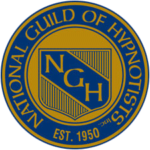
Cranial Electrotherapy Stimulation is the U.S. Food and Drug Administration’s (FDA) term for the employment of small amounts of gentle electrical stimulation for the treatment of depression, anxiety and insomnia.
Research over the last few decades has helped professionals better understand the connection between brain function, neurotransmitters, and electrical stimulation. We have learned that the electrical activity in your brain controls the neurochemicals which regulate your moods, emotions, sleep, and cognition.
Stress causes that electrical activity to not function properly. This in turn results in the neurochemicals falling out of balance. By indirectly stimulating brain tissue in the hypothalamic area, CES causes the brain to restore the various neurochemicals back to pre-stress homeostasis, resulting in a peaceful, centered, and efficient state of being.
CES is both safe and effective. Published literature on the subject does not report any negative effects or major contraindications from its use. Most people experience results within just a few days. The relaxed-but-alert state usually remains for an average of 12 to 72 hours after the first few sessions. CES can be used as much or as often as you desire.
Now you too can achieve a state of relaxation, peace of mind, and restful sleep, without resorting to drugs.
History of CES
CES (Cranial Electrical Stimulation) has been well-researched and studied. Research on CES began in the former Soviet Union during the 1950s where its primary focus was the treatment of sleep disorders, hence its initial designation as “electro-sleep.” Treatment of insomnia was soon overshadowed, however, by psychiatric application for depression and anxiety. Since then, it has been referred to by many other names, the most popular being “transcranial electrotherapy” (TCET) and “neuroelectric therapy” (NET).
Because of the success of CES, Eastern European nations soon adopted CES as a treatment modality, and its use spread worldwide. By the late 1960s, animal studies of CES had begun in the United States at the University of Tennessee and what is now the University of Wisconsin Medical School. These were soon followed by human clinical trials at the University of Texas Medical School in San Antonio and the University of Wisconsin Medical School. More studies followed.
Scientific Evidence
There currently exist more than 1,000 articles on CES therapy many of which are listed in four reviews put out by the Foreign Service Bulletin of the United States Library of Congress. This is in addition to the wealth of physiological and bio-engineering data on electro-sleep and electro-anesthesia, including 18 experimental animal studies. Human research studies on CES currently number more than 100.
Its efficacy has been clinically confirmed through 28 established psychometric tests, computerized EEGs and topographical brain-mapping. Meta-analyses yielding positive results from the use of CES have been conducted at the University of Tulsa and at the Harvard University School of Public Health. The most extensive work on CES is presently being conducted at the Pavlov Institute in St. Petersburg, Russia.
Contact us to learn how CES can help you







